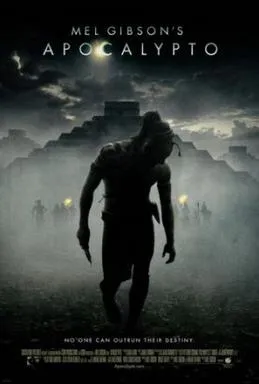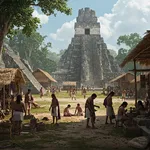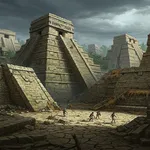Historical accuracy of Apocalypto

Historical accuracy of Apocalypto

- 1000 BC
First settled Maya villages
- 600 BC
First signs of Maya culture
- 250 AD
Classic Maya Period begins
- 900 AD
Classic Maya Collapse
- 900 AD
Spanish arrives in Yucatán
- 900 AD
Postclassic Maya Period begins
- 1517
Spanish arrives in Yucatán
- 1697
Last Maya kingdom conquered
Characters
All the characters are fictional
Story
The main story is fictional
Jaguar Paw's daring escape and survival through the jungle is a fictional narrative created for the film.
Setting
Mayan civilization setting
The film is set in Mesoamerica during the decline of the Mayan civilization, around the early 16th century.
Jungle village raid
While warfare and raids were common among Mayan city-states, the film's depiction of a brutal attack and enslavement may be exaggerated for dramatic effect.
Mayan city depiction
The film visually recreates a Mayan city with impressive temples and palaces, but it may not fully capture the complexity and diversity of Mayan urban centers.
Social hierarchy
The film depicts a rigid social hierarchy with a king, priests, and warriors, but it simplifies the nuances of Mayan social structure.
Environmental collapse
The film suggests environmental problems contributed to the Mayan decline, which is supported by some research, but the extent and specific causes are debated.
Disease and epidemics
Disease outbreaks likely played a role in the decline of Mayan populations, but the film's portrayal of widespread illness may be exaggerated.
Mayan language
The film uses the Yucatec Maya language, adding authenticity to the dialogue and cultural portrayal.
Costumes and body paint
The film's costumes and body paint are visually striking but may not be entirely accurate representations of Mayan attire.
Religious beliefs
The film depicts some Mayan religious beliefs and rituals, but it simplifies a complex spiritual system.
Hunting practices
The film shows hunting techniques used by the Maya, but it may exaggerate the violence and danger for dramatic effect.
Forest environment
The film captures the lush and dense rainforest environment of Mesoamerica.
Human sacrifice
Human sacrifice was practiced by the Maya, though the film's portrayal of mass sacrifices and the specific methods may be disputed.
Spanish arrival
The film concludes with the arrival of Spanish conquistadors. In reality, the conquistadors arrived in the 16th century, more than 600 years after the Mayan collapse.
The real history behind Apocalypto
The Maya

The Maya civilization, flourishing in Mesoamerica from around 250 AD to 900 AD, left a remarkable legacy. Known for their sophisticated writing system, intricate calendar, and impressive architecture, they were a highly advanced society. They built monumental cities with towering pyramids, complex irrigation systems, and elaborate palaces.
Their understanding of astronomy was exceptional, allowing them to predict eclipses and create accurate calendars. The Maya also developed a complex hieroglyphic script, recording their history, mythology, and scientific knowledge. While the 'classic' period saw a decline, Mayan culture persisted, with descendants still living in the region today, maintaining aspects of their ancestral traditions. Their artistic achievements, including intricate sculptures and vibrant murals, demonstrate a rich and complex culture.
The Mayan collapse

The Mayan collapse, a dramatic decline of the Classic Maya civilization around 900 AD, remains a complex historical puzzle. Once thriving with impressive cities and sophisticated culture, the Maya heartland saw rapid depopulation. Several theories attempt to explain this downfall.
Drought is a leading hypothesis. Prolonged dry spells likely led to agricultural failures and resource scarcity. Warfare between rival city-states also played a significant role, exacerbating existing problems. Overpopulation, straining resources, and social unrest are other contributing factors. It's likely a combination of these factors, rather than a single cause, that led to the Mayan collapse.
